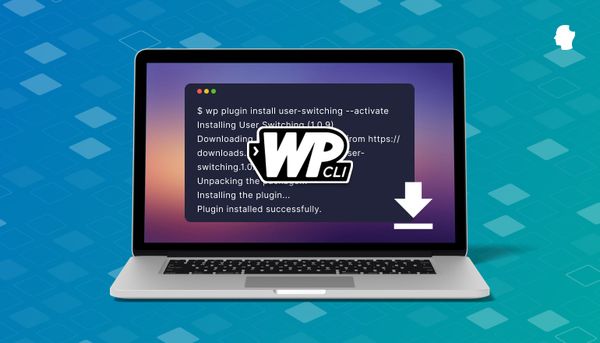Splitting a WordPress Multisite: Migrating a Subsite to its Own Single Installation
WordPress multisite networks offer flexibility, but a subsite often needs its own single installation for client needs, scaling, or simplified management. Separating a subsite is complex due to Multisite’s unique…
The Best WordPress Backup Plugins for 2025
Backing up your site is a little like buying fire insurance. You never need it outside of a catastrophe, but not having it is just going to make the catastrophe…
The Complete Guide to Installing WP-CLI
The WordPress command line interface (WP-CLI) is a powerful WordPress-developer focused tool. We use it to help us write tests, manage changes to site databases, and we even have WP-CLI…
The Best Local WordPress Development Environment: XAMPP vs MAMP vs Laragon vs Local
A local development environment lets you make changes to dev sites quickly without having to transfer files. It also greatly reduces the risk of making and breaking changes on a…
WP-CLI Packages: Supercharge Your WordPress Development
WP-CLI packages take the increased efficiency of the command line even further by extending it with new or modified commands. In this article, we’ll show you how to install packages,…
How to Test Webhooks From Public APIs in Local Development
Webhooks are a mechanism for receiving notifications about events from disparate systems without having to continuously poll them. Also called Reverse APIs, they can be thought of as providing “API…
Everything You Need to Know About Installing WordPress in a Subdirectory
In this article, we look at the benefits and limitations of installing WordPress in a subdirectory, how to install and manage subdirectory installs, and how to move WordPress core out…
JavaScript in the Shallow End: Browser-Based React Native With Expo Snack
“Learn JavaScript. Deeply,” is good advice, but jumping right into the deep end when you’re first learning to swim may not be the smartest move. In this article, we’re going…
Mastering Migrations: Faster, Easier, and Safer Ways to Move Your WordPress Sites
Every WordPress developer knows the feeling of despair when a migration fails, balanced by the immense feelings of relief when one succeeds. It’s a frustrating process for many devs, with…
The Developer’s Advanced Guide to the wp-config File
How well do you really know wp-config? There’s a surprising amount of power in those few lines of PHP! This article is a tour of some bits of wp-config that…
How to Switch Your WordPress Site from HTTP to HTTPS
Just about every WordPress website should be served over HTTPS instead of HTTP, for reasons of both security and SEO. HTTP content isn’t encrypted, leaving your site vulnerable, and Google…
Managing Your WordPress Site With Git and Composer
Managing WordPress with Git and Composer has some big advantages. In particular, it can give you version control and helps get new people up to speed quickly. But it’s not…
Debugging React, JavaScript, and PHP at the Same Time With PhpStorm
Ever since I discovered how to configure PhpStorm with Xdebug for debugging, it’s been my go-to solution for hunting down difficult to reproduce bugs. What I didn’t know until very…
Create Your Own SSL Certificate Authority for Local HTTPS Development
In 2018 Google started advocating that sites adopt HTTPS encryption, by marking sites not using an SSL certificate as “not secure” in their Chrome browser. This was widely accepted as…
Understanding WordPress GUIDs: What They Are, and Why Change Them
The WordPress GUID is a unique identifier for individual posts, pages, media, and practically any other custom post type. As such, it’s a key element in rendering your WordPress content…
Reviewing Craft Nitro & DevKinsta for WordPress Local Development
One of the cool things about my job as Developer Educator at Delicious Brains is that sometimes I get to try out new things that I might otherwise never discover.…
Why You Should be Using WP_DEBUG_LOG in Your WordPress Development
Whether you’re a developer, or a site owner troubleshooting a problem with your site, understanding the WP_DEBUG_LOG constant for turning on the WordPress debug log is very important. In this…
VS Code Wins Best PHP IDE/Editor for WordPress Development in 2021
When building software or websites, you’ll need to use an integrated development environment (IDE), a code editor or if you’re really brave, a text editor. They each offer different benefits…
Switching to Windows for Local WordPress Development
As you may have noticed from reading our blog, we’ve highly favored Mac and Linux for WordPress development. And we’re not alone – through my very scientific and thorough research,…
The Best Setup for Your Local WordPress Development Environment
When running a WordPress website it’s best practice to at least run a local copy of the site so you can make changes without running the risk of completely ruining…
Valet vs VVV vs Chassis: A Comparison Guide to CLI-Based Local WordPress Development Environments
In my last article, I reviewed the best WordPress development environment apps out there. But that’s not all of it, there are a number of great options available as well…
Vagrant vs Docker: Which is better for WordPress development?
Before Docker came on the scene Vagrant was the go-to solution for creating development environments that can be configured independently of your machine and shared with a team. There are…
Advanced Migration Workflow Tips For The Lazy WordPress Developer
Sure you migrate WordPress databases on the regular and have a pretty good idea of what you’re doing, but is there anything that could make your migrations go more quickly…
Using Devilbox for Local WordPress Development in Docker
For some time now I’ve been wanting to move all of my local development sites over to Docker instead of running them natively on my machine or running them in…























